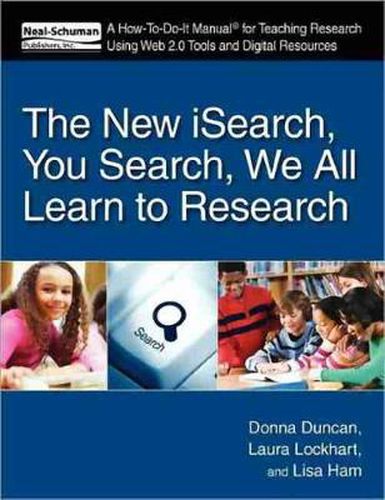Readings Newsletter
Become a Readings Member to make your shopping experience even easier.
Sign in or sign up for free!
You’re not far away from qualifying for FREE standard shipping within Australia
You’ve qualified for FREE standard shipping within Australia
The cart is loading…






This title is printed to order. This book may have been self-published. If so, we cannot guarantee the quality of the content. In the main most books will have gone through the editing process however some may not. We therefore suggest that you be aware of this before ordering this book. If in doubt check either the author or publisher’s details as we are unable to accept any returns unless they are faulty. Please contact us if you have any questions.
Today’s students will become tomorrow’s knowledge workers. How can librarians and teachers help children develop the critical thinking and information problem-solving skills they will need to be confident and flexible users of information in the 21st century? This unique manual adapts the innovative and effective iSearch research process for grades three through eight. Here is a blueprint for helping students formulate questions leading them to personal discoveries, as well as strategies for teaching them to fashion those discoveries into information of their own. In addition to the educational theory behind the unique iSearch information seeking process, the authors provide lesson-plans, techniques, and tools for making the information search process an adventure for students.
Easy-to-use lessons tied to current technology applications demonstrate on-line teacher/librarian collaboration, online research tools and Web 2.0 resources. You get great tips for incorporating on-line journals, notetaking tools, graphic organisers and online products and presentations. The final chapter focuses on authentic assessment. There are examples and links to formative assessment tools and rubrics that will let you and your students know they’re doing a good job. There’s even a companion wiki site with easily reproducible handouts, electronic student products created using the iSearch process, and an opportunity to join the discussion on the digital iSearch. Tech savvy students disconnected from teachers become more motivated by these instruction methods. Using this effective guide, you’ll be able to use the iSearch methods to help your students develop the crucial search skills called for in the American Association of School Librarian’s Standards for the 21st Century Learner and ISTE (International Society for Technology in Education).
$9.00 standard shipping within Australia
FREE standard shipping within Australia for orders over $100.00
Express & International shipping calculated at checkout
This title is printed to order. This book may have been self-published. If so, we cannot guarantee the quality of the content. In the main most books will have gone through the editing process however some may not. We therefore suggest that you be aware of this before ordering this book. If in doubt check either the author or publisher’s details as we are unable to accept any returns unless they are faulty. Please contact us if you have any questions.
Today’s students will become tomorrow’s knowledge workers. How can librarians and teachers help children develop the critical thinking and information problem-solving skills they will need to be confident and flexible users of information in the 21st century? This unique manual adapts the innovative and effective iSearch research process for grades three through eight. Here is a blueprint for helping students formulate questions leading them to personal discoveries, as well as strategies for teaching them to fashion those discoveries into information of their own. In addition to the educational theory behind the unique iSearch information seeking process, the authors provide lesson-plans, techniques, and tools for making the information search process an adventure for students.
Easy-to-use lessons tied to current technology applications demonstrate on-line teacher/librarian collaboration, online research tools and Web 2.0 resources. You get great tips for incorporating on-line journals, notetaking tools, graphic organisers and online products and presentations. The final chapter focuses on authentic assessment. There are examples and links to formative assessment tools and rubrics that will let you and your students know they’re doing a good job. There’s even a companion wiki site with easily reproducible handouts, electronic student products created using the iSearch process, and an opportunity to join the discussion on the digital iSearch. Tech savvy students disconnected from teachers become more motivated by these instruction methods. Using this effective guide, you’ll be able to use the iSearch methods to help your students develop the crucial search skills called for in the American Association of School Librarian’s Standards for the 21st Century Learner and ISTE (International Society for Technology in Education).